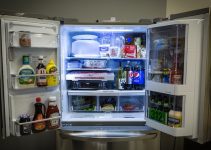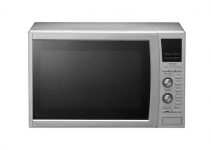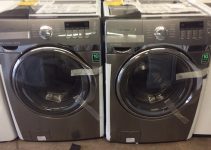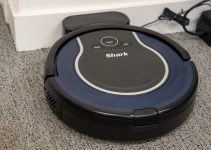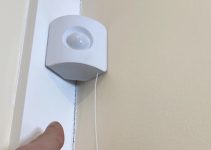If your Samsung refrigerator is warm while your freezer is freezer, it could be a simple problem that could require a simple fix. However, there are several reasons why this could happen and some could require replacing some expensive components of the refrigerator and others would require the help of a technician. Let’s get to them.
Samsung Refrigerator Not Cooling (Freezer OK): DIY Fixes
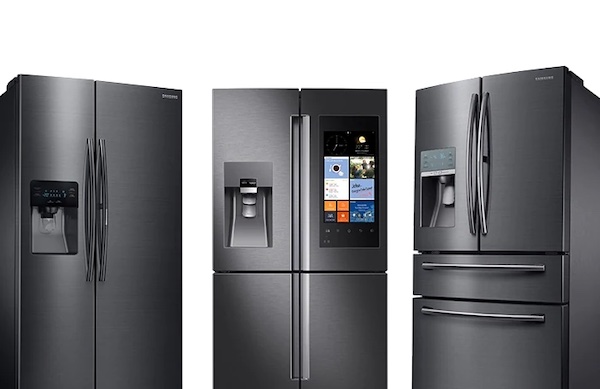
1. Check the Basics
Before moving to the more advanced components of the refrigerator, you might want to recheck the basics to ensure everything is in order. Check if the fridge is plugged in properly, then check the outlet if is also working properly. If everything is in order, you can move to the other components.
2. Check the Evaporator Fan Motor for Faults
This is the most common reason why your refrigerator fails to cool and your freezer is working fine. The evaporator fan motor is designed to draw cold air over the evaporator coils and circulate it throughout the freezer. If the evaporator fan fails, then the freezer or refrigerator will not cool adequately.
To test if the evaporator fan is faulty, you will have to turn the fan blade by hand. Watch if the fan blade turns freely. If it doesn’t, then you will have to replace the fan motor. However, if it does turn freely but it is unusually noisy, it would still have to be replaced.
Another thing is if the motor does not run at all. For this, you will need to use a multimeter to test the motor windings for continuity. If it does not have continuity, then it will be replaced.
3. Inspect the Damper Control Assembly
The air damper control will open and close to let the proper amount of cold air into the refrigerator compartment. If the damper does not open as required, there won’t be enough cold air entering the refrigerator. This is actually a simple fix. Just inspect the damper control to see if it is broken or stuck closed.
4. Check if the Thermistor is Defective
The thermistor is designed to monitor the refrigerator temperature and send the temperature reading to the control board. Using the thermistor readings, the control board then regulates power to the compressor and evaporator fan. If the thermistor is faulty, the compressor and evaporator fan may not run as frequently as they need to.
To check if the thermistor is faulty, test it with a multimeter. The thermistor resistance should change in conjunction with the refrigerator temperature. if this doesn’t happen and there is no continuity in the thermistor, you will have to replace the thermistor.
5. Replace the Temperature Control Board
This is not an easy fix and also less likely to be the problem with your refrigerator. The temperature control board provides voltage to the compressor and fan motors. A control board faulty will result in a loss of voltage to the compressor or fan motors.
Control boards problems are pretty rare so you might want to test all the more commonly defective components first. If they all check out, then you can go ahead to replace the temperature control board.
6. Check if Evaporator Coils are Frosted Over
In some cases, you could be dealing with a defective defrost heater assembly. The defrost heater assembly turns on a few times in the day to melt away any frost that could have accumulated on the evaporator coils.
If the defrost heater assembly is faulty, the frost will continue to build up on the evaporator coils leaving the coils plugged with frost. When the evaporator coils are frosted over, the airflow through the coils will be restricted causing the refrigerator not to cool. To confirm that the evaporator coils have accumulated frost, you need to inspect them and test each component of the defrost system for faults.
7. Check for a Defective Defrost Control Board
The defrost control board regulates how often to run the defrost cycle. If the defrost control board is faulty, the refrigerator will not run the defrost cycle and the frost will continue to accumulate on the evaporator coils.
When this happens, the refrigerator will have to work extra to remove heat. This will make the refrigerator too warm and could be the reason why it is not cooling. Check if the defrost thermostat and defrost heater properly. If they are, then the defrost control board is defective and will have to be replaced.
8. Replace the Defrost Thermostat
The defrost thermostat is designed to monitor the temperature of the evaporator coils. If the coils drop below a certain temperature, the thermostat will boost the power flow to the defrost heater during the defrost cycle. During this cycle, the defroster heater melts any frost that may have accumulated in the evaporator coils.
If the defrost thermostat is defective, the thermostat will not work efficiently. The result of this is that the thermostat won’t provide power to the defrost heater. To check if the defrost thermostat is defective, you need to use a multimeter to test it for continuity. If the defrost thermostat does not have continuity when it reaches the low temperature of its operating range, then it will have to be replaced.
9. Check if the Defrost Timer is Faulty
The defrost timer is designed to control the defrost heater. It will turn on the defrost heater several times throughout the day to melt any frost that may have accumulated on the evaporator coils. If the defrost timer is faulty, it might not send power to the defrost heater during the defrost cycle.
If the defrost system malfunctions, frost will continue to accumulate on the evaporator coils. To clear the frost, the refrigerator will have to work harder which will result in the refrigerator being too warm. To check if the defrost timer is defective, advance the dial into the defrost cycle. Normally, the compressor should turn off and the heater will turn on. If the timer does not send power to the defrost components within 30 minutes, it means the defrost timer is defective and needs to be replaced.
